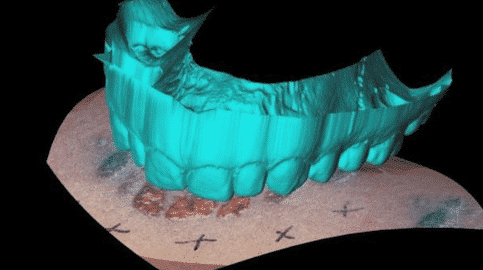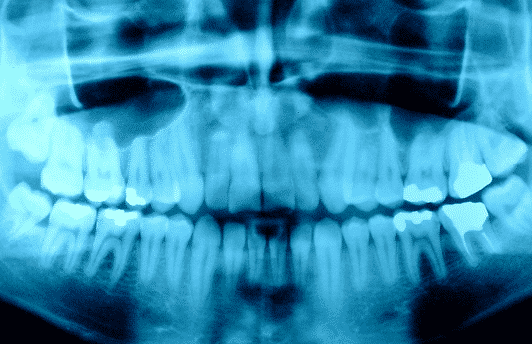Forensic Dentistry in the Mainstream
With so many crime solving dramas on TV these days we’ve all become exposed to forensic science and what it can do for our investigation agencies. A medical examiner can determine a time of death. A blood spatter analyst can give an accurate idea from where a bullet was shot. A CSI team can determine how a fight went and how it ended. And of course, we’ve all seen a medical examiner use forensic dentistry in some TV or movie crime drama ask for dental records to identify an otherwise unknown body. But how accurate is this portrayal?
What is Forensic Dentistry?
Forensic Dentistry or forensic odontology is the proper handling, examination and evaluation of dental evidence. It is the application of dental knowledge to assist in the investigation process for law agencies. Forensic dentists can use their vast knowledge to identify human remains as well as determine age, gender, race, occupation, previous dental history and socioeconomic status. Identification is done by comparing ante mortem dental records to the post mortem records through the use of x-rays. Another type of evidence is bite mark analysis, wherein a dentist will make a cast of the suspects teeth and compare them to bite marks found on a victim or at the scene of a crime.

Forensic Dentists are responsible for 6 main areas of practice:
- Identification of found human remains
- Identification in mass fatalities
- Assessment of bite mark injuries
- Assessment of cases of abuse (child, spousal, elder)
- Civil cases involving malpractice
- Age estimation
How long has forensic dentistry been used as an investigation tool?
It’s hard to say exactly when in history the idea to use teeth to help in an investigation was, but there are many examples dating back as far as ancient Rome.
Forensic Dentistry in Rome 49 B.C.
It is known that in 49 B.C., Agrippina, mother of the Roman Emperor Nero, ordered the death of a rival named Lollia Paulina. When her soldiers returned with a viciously mutilated head Agrippina knew it to be the head of her rival, Lollia, after seeing the woman’s distinctively discolored front teeth.
Forensic Dentistry in the Salem Witch Trials 1692
In 1692, in the United States during the Salem Witch trials Rev. Burroughs was sentenced to hang for a murder after his bite marks were compared to matching marks found on a victim.
Forensic Dentistry in the Revolutionary War with Paul Revere
During and after the Revolutionary War, Paul Revere (a blacksmith and dentist by trade) helped identify soldiers and civilians who died in battle and were buried on the battlefield by their teeth and dental work. He even identified Dr. Joseph Warren, the man who sent him on his famous ride, because Revere had made a partial for Dr. Warren out of silver wire and hippo tusks.
What makes dental records useful for a Forensic Dentist?
Teeth and dental work are like fingerprints and snowflakes. No two are the exact same. Humans are such fascinating beings. So uniquely created right from the start. In a previous blog it was discussed that humans start developing teeth as early as 14 weeks in the womb. Everything the mother does ends up affecting the fetus in small ways, including how the teeth are developed. Once the child starts using those teeth, everything that person does throughout the rest of his/her life reflects in the teeth.
By examining the teeth, a forensic dentist can determine age, gender and race based on the structure and size of the teeth and jaw. From there they can continue to narrow down the list of possible people by determining the person’s habits. Did he bite his nails? Did she smoke? Did he play an instrument such as a horn or flute, what she ate and even how she ate? All of these things leave specific markers on a person’s teeth. Calculating all these factors can give the forensic dentist, pathologist, M.E. and investigating agency many clues to find the identity of the unidentified body.
Ok, but how are dental records obtained for use in Forensic Crime Solving?
We should know by now that certain things done in movies are not real. The portrayal of using dental records for identifying human remains is rather skewed compared to the reality of the process. In a TV show, the M.E. can’t identify a body, asks for dental records (never saying where these records are coming from or how they are obtained) and by the end of the day, the x-rays show up. In reality, forensic dentistry is not that simple, and never that fast.
There is no central database storing all dental records and x-rays for every person in a country. Contrary to popular conspiracy theories, Big Brother isn’t monitoring our dental work. Most of the time, when dental records are used as evidence, it’s because the medical examiner has an idea of the person’s identity but uses the dental records to verify. Sometimes, the M.E. has to compare the post mortem records with the ante mortem records of known missing persons in order to identify a body. If the body is truly unknown, the forensic pathologist, with the insight given by the forensic dentist (by determining age, race, gender and style of dental work) can narrow down a list of dentists in an area from whom the police can request dental records.
Remember, a person’s teeth can tell a lot about a person; including the region of the country the person lived (that part of the movies is actually true!). The style of dental work can tell a lot about the dentist himself; where he was trained and when, which can also narrow down the list. Once an idea of who the person is, or where they may have received their dental care, the police can begin looking for dental records. How? They go to a dental office, with warrant in hand, and ask to get a copy of the x-rays and records.
Notable Forensic Dentistry Crime Cases: Solved
Ted Bundy Dental Records
Did you know Ted Bundy was convicted for the murders he committed at the Chi Omega House in Tallahassee, FL based on a bite mark? It was the only evidence he left behind.
Wayne Boden Dental Records
Wayne Boden, a Canadian serial killer was convicted for several murders based on bite mark evidence on his last victim. According to the orthodontist who led the dental investigation, there were 29 points of similarities between the cast made of Boden’s teeth and the bite marks on the victim. Enough for a jury to find him guilty.
Walter Marx Dental Records
In 1975, Walter Marx was convicted of murdering a woman after his dental records and bite marks were compared to those found on the woman’s nose. the process in which these comparisons were made, and the way in which the dental evidence was collected has become the standard for Forensic Odontology.
So, yes, TV and movies have yet again exaggerated the methods, but forensic dentistry has proven to be a viable and practical investigative tool in bringing criminals to justice.
